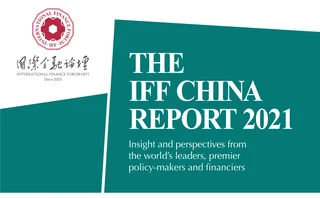
Back in circulation


The Central Committee of the Communist Party of China (CCCPC) has repeatedly used the phrase ‘new development paradigm’ – a series of comprehensive developing strategies, including that of ‘dual circulation’. Some of those strategies aim to shift emphasis from the external demand-driven economy to a domestic-driven one by promoting consumption and stimulating demands at home.
China has been promoting supply-side reform over the years because domestic supplies have been unable to satisfy demand, especially in high-quality areas such as medical care and education. Therefore, as recently raised by the CCCPC, the idea of dual circulation and domestic circulation as a mainstay is to increase consumption and production in China’s own economy, and combine this domestic-driven strategy with supply-side reform to build a positive cycle.

The heavy toll of the China–US trade war and the Covid‑19 pandemic has forced China to reflect on the industrial and supply chains, which are frequently disrupted or deficient, as in the trading of computing components such as electronic chips and central processing units. This is a new arena of competition between China and the US, and we must consider how to make up for those chains through financial means in case of disruption. Putting more effort into the financing of industrial and supply chains could facilitate China’s domestic circulation. Another important issue is regional co-ordination. The CCCPC could facilitate domestic circulation with its formulation of regional co-ordination strategies such as the development of the Guangdong–Hong Kong–Macao Greater Bay Area, the integration of the Yangtze River Delta, and co-ordinated development around the Jingjinji Metropolitan Region of Beijing–Tianjin–Hebei.
The vice-president of China, Wang Qishan, indicated last year that finance should unswervingly serve the real economy by establishing a positive cycle. In traditional terms, the international cycle refers to trade and investment, while in the new development paradigm, it also includes the circulation of production factors, namely the interaction of capital.
Another factor is labour: in the global market, China’s circulation of labour with other countries is still relatively weak. Although there are many students studying abroad and Chinese nationals overseas, greater efforts are needed to attract top international talent to China.
Data exchanges
The dual circulation of data is also a major topic. Data sovereignty and the flow of data among countries are brand-new topics. How can dual circulation be achieved with the two mutually reinforcing each other in terms of production factors. Technological innovation now plays a pivotal role. Trade frictions between China and the US have evolved into a technological war that has hindered the exchange of innovation. China must consider how to expand its technological exchanges with other countries in such a context; Europe, Japan, the Republic of Korea and the Association of Southeast Asian Nations member countries are prime candidates.
Why do we propose a new development paradigm? The concept is in line with the natural law regarding the economic development of large countries; only large countries can develop an economy based primarily on domestic strength. Against such a backdrop, China has to find a number of new internal driving forces. The CCCPC has already issued the 14th Five Year Plan (2021–25) for National Economic and Social Development and the Long-Range Objectives Through the Year 2035, which declares that China has entered a stage of high-quality development and a new development paradigm should be formed.
The external environment and current situation should also be considered. Strategic rivalry between China and the US has brought about national security issues, which are
rarely discussed by the financial sector. Financial opening-
up might trigger risks, but risks can be controlled and managed by calculating their probabilities and developing hedging instruments.
National security is always an uncertain risk, hard to quantify and harder to estimate its probability. In the face of national security threats, a very common view is that finance should be opened with more caution.
Some people believe uncertainty and even the risk of war will arise as conflicts intensify between countries, so we need to protect ourselves and avoid opening up, otherwise we will suffer from greater external shocks. On the contrary, we should reinforce financial opening-up under the backdrop of potential national security threats, and it should be a two-way opening-up that reaches a deeper and broader level. Broader financial openness can attract international capital and investors, which could mitigate the risk of war or national security threats between China and other countries – especially with the US. In other words, the attached risks of financial openness can actually help us hedge the uncertainties regarding national security. With greater insecurities, finance should open up on a larger scale, including institutions, markets, capital projects and renminbi internationalisation.
In general, the majority of risk associated with opening financial markets comes from foreign capital, which can cause intense price fluctuations, and affect China’s capital markets and real estate. In fact, we should be more open to ‘hot money’ – funds flowing from one country to another in search of a short-term profit on expected exchange rate shifts or interest rate differences. This will help mitigate risks concerning national security. There is a need for financial firms to develop risk management tools and for regulators to enhance the exchange rate mechanism to allow more flexibility; in turn, this should help mitigate the impact of any issues attached to foreign capital. In addition, taxation in the form of value-added tax and increased transaction tax can reduce the inflow of speculative hot money. Equally, a departure tax could discourage its outflow in the short term. Undoubtedly, industrial guidance policies are also helpful.
Room for improvement
The opening-up of China’s financial markets will also involve expanding the provision of Chinese businesses overseas. This includes the overseas listing of Chinese firms and the continued internationalisation of the renminbi. Faced with uncertainties around global security, we could focus less on renminbi internationalisation and more on the International Monetary Fund’s special drawing rights. Specifically, we should study and promote currency digitisation and embrace all major currencies, including the US dollar.
Finance should serve the domestic circulation as the mainstay under the new development paradigm. Even though China’s financial system has accomplished much, many areas still need work.
The first is the development of financial services that can promote consumption. The current financial system pays more attention to production and the circulation of services, which could be improved by adding more consumer finance, increasing non-labour income. Insurance could also be boosted since this industry is still relatively small in China. The second is the promotion of financial services on the supply side, which is also necessary for domestic circulation. Indirect financing and a financial system that is mainly based on banks is not sufficient to promote the desired innovation needed by the economy. For that reason, capital markets could act as a service system to promote innovation. The last is co-ordinated development. Governments must serve as facilitators for the development of regional economies through the construction of city clusters and the integration of various regions, as we have already seen in the Greater Bay Area and elsewhere.
Only users who have a paid subscription or are part of a corporate subscription are able to print or copy content.
To access these options, along with all other subscription benefits, please contact info@centralbanking.com or view our subscription options here: subscriptions.centralbanking.com/subscribe
You are currently unable to print this content. Please contact info@centralbanking.com to find out more.
You are currently unable to copy this content. Please contact info@centralbanking.com to find out more.
Copyright Infopro Digital Limited. All rights reserved.
As outlined in our terms and conditions, https://www.infopro-digital.com/terms-and-conditions/subscriptions/ (point 2.4), printing is limited to a single copy.
If you would like to purchase additional rights please email info@centralbanking.com test test test
Copyright Infopro Digital Limited. All rights reserved.
You may share this content using our article tools. As outlined in our terms and conditions, https://www.infopro-digital.com/terms-and-conditions/subscriptions/ (clause 2.4), an Authorised User may only make one copy of the materials for their own personal use. You must also comply with the restrictions in clause 2.5.
If you would like to purchase additional rights please email info@centralbanking.com test test test







